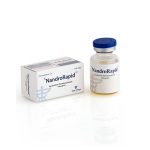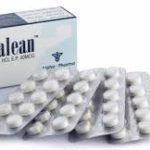Lose weight with bodybuilding and intensive training
As scientists have established, the intensive training by a person during exercise is limited by the consumption of oxygen.
The inhalation of one liter of oxygen is equivalent to “burning” 5 calories, but per minute at the highest rate of movement the athlete can breathe no more than 3-4 liters of oxygen. This means that the average energy consumption per minute is a little more than 15-20 calories.
The average athlete usually trains with an intensity that is two-thirds of the maximum. This means energy costs of 8-10 calories per minute.
Physical activity is very useful for the whole organism. But sports will not help you lose weight if you do not change other aspects of your life. The article contains research data on the relationship between sport and weight loss, as well as the opinions of leading scientists in the field of exercise, nutrition and excess weight.
Fitness instructors repeat what we all hear for years: to redeem the sin of gluttony can be on the treadmill. And this message is spread by the fitness guru, the stars, food and beverage companies, health officials and doctors.
Due to the belief that the sport will help you lose weight, you can successfully buy tickets to gyms, fitness trackers, sports drinks and video with training.
But the trouble is: this confidence is based on false ideas and deceives us in our fight against excess weight.
How many calories are expended for one workout?
For training a classic half-hour duration, the athlete will “burn” a little more than 300-400 calories. And this despite the fact that “melting” 400 g of body fat requires 3500 calories!
Moreover, the additional energy consumption during the recovery period is equal to half the initial energy consumption! This means a solid minus of another 150-200 calories.
Thus, the total energy consumption after 30 minutes of physical exertion will already be 550-600 calories! This is equivalent to increasing the duration of the training for another 15 minutes.
Fortunately, everything is not so hopeless. The fact is that the “burning” of calories does not stop with the end of training. The process seems to gain momentum, which is maintained for at least 12 more hours.
The main sources of energy in the human body
It must be remembered that fats are not the only source of energy for the body. Other such sources are carbohydrates obtained with food, liver glycogen and protein molecules.
Since each of them, including fats, releases energy at different rates, the body has to make a choice between them. So, training with high intensity is accompanied by the utilization of carbohydrates, but the low intensity “includes” fats.
So, when you sit on the exercise bike to lose weight, you need to pedal for a long time, but slowly. The faster you “go”, the farther away from your goal – the “burning” of subcutaneous fat.
In the period after the training, everything gets upside down. If you trained with low intensity, your body does not even remember fat as a source of energy for subsequent recovery.
But if you trained in an over-intensive manner, the utilization of fats grows more than 300%!
To lose weight faster – we work harder
Intensive training has another advantage. He “launches” in the body a very special mechanism so-called. “Useless” burning calories.
Thanks to him, extra calories are no longer stored in the form of subcutaneous fat. Under the influence of adrenaline-secreted adrenaline, they turn into a physiologically “useless” form of energy – heat.
Intensive training is the only known way to increase muscle mass. And this is another advantage of such training for those who want to lose weight.
The fact is that different tissues and organs of the body require different energy inputs to maintain the necessary biochemical reactions in them. The most energy-intensive tissue is fat. It takes away most of the energy it receives from the outside world (that’s why people are full of slowness and slowness).
If you train intensively, then as the muscle tissue grows, the palm tree in power consumption goes to it. And the higher the muscle “mass”, the more it needs calories even at rest.
With extreme muscle volumes, energy consumption of muscles increases so much that food calories simply do not have time to turn into subcutaneous fat.
To consolidate the result of weight loss – we intensive training
Who wants to lose weight with the help of sports, should clearly understand: it is useless to hope for “burning” the subcutaneous fat with the help of a brief period of shock physical exertion.
Success will be temporary. Anyone who wants to lose weight once and for all should be tight-knit with sports, in order to turn his body into a car to grind calories by regular and persistent trainings.
You will have to “teach” your body to lose weight. Well, like all studies, it’s a long and difficult process.
Try training with lifting weights
Fitness expert Amy Nicotera argues that lifting weights pushes our body to change. At the same time she says that one should not be afraid of getting better – this will not happen.
As Esther Blum emphasizes, lifting weights increases the level of hormones in our body, stimulating the natural need to burn fat for a full 24 hours after training. According to her, this should stimulate those who struggle with excess weight, go to the gym.
Do not forget to drink water during exercise
In order not to bring your body to dehydration, timely replenish the fluid balance. To do this, you should always keep a bottle of water at hand. Water will promote weight loss, and will also help to feel brisk and healthier throughout the year.
Remember the importance of a good rest
The lack of sleep affects not only the emotional state, but also affects the physical. As the results of the research show, people who did not get enough sleep at night, on the next day, eat an average of 549 additional calories, without even realizing it. And if you consider that lack of sleep also slows the metabolism and our body burns 20 percent fewer calories, of course you will recover.































